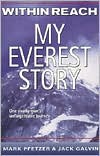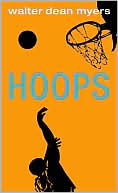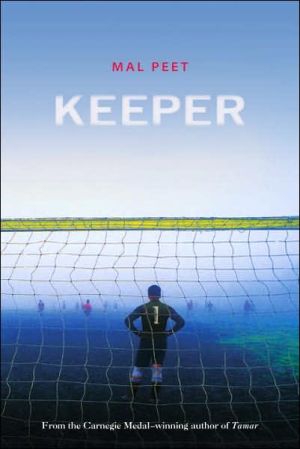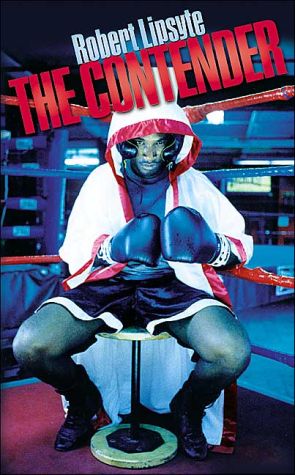Within Reach: My Everest Story
In May 1996 the media scrambled to document the gripping story of sixteen-year-old Mark Pfetzer's expedition to Mount Everest. Not only was he the youngest climber ever to attempt the summit, he also witnessed the tragedy documented in Jon Krakauer's Into Thin Air, in which eight climbers perished in a sudden storm. Within Reach is Mark's extraordinary account of this experience and of his triumphs over several other challenging peaks. At once triumphant and tragic, this story will be an...
Search in google:
The world's most famous teenage mountain climber offers an extraordinary personal account. In May, 1996 the media scrambled to document the gripping and inspirational story of sixteen-year-old Mark Pfetzer's expedition to Mount Everest. Not only was he the youngest climber to attempt the summit, but he bore witness to the tragedy documented in Jon Krakauer's Into Thin Air, in which eight climbers perished in a sudden storm. Within Reach is Mark's extraordinary personal account of this experience, and of his triumphs over several other challenging peaks. In this suspenseful first-person narrative, Mark takes the reader past the ever-shifting Khumbu Icefall, over three-hundred-foot crevasses, and up into the high altitude "Death Zone" of Everest. By turns triumphant and tragic, this story will be an inspiration to climbers, athletes, and armchair enthusiasts young and old. Mark Pfetzer holds several world records for high altitude climbing. He lives in Villa Hills, Kentucky.Jack Galvin is a well-known sportswriter and columnist who has written feature articles for many newspapers and magazines. He lives in Providence, Rhode Island. VOYAUnlike most teenagers who mostly learn at school, Mark Pfetzer's education involves traveling around the world to climb mountains while learning from other climbers, including architects, doctors, and philosophers. Experiencing different cultures is also a valuable lesson for Mark. Here Mark's life is chronicled from 1994 to 1996 through his travels to Peru, Argentina, Tibet, Nepal, Africa, and Washington. On what Mark calls a pilgrimage, he learns to get along with various people, face the physical challenges of staying in shape, and handle the emotional challenges of missing his family. Mark describes preparing to climb: "Over my down pants, jacket and hood, I put on an oxygen mask tank, heavy backpack, and goggles. The trouble is the mask. It has an extra-long tube to the tank under my arms and around my back, which I keep getting twisted. I feel tied up." One of the flaws in this book is that it is difficult to keep track of the different expeditions and eventually they seem to merge. As someone without a background in climbing, it was a bit difficult to understand some of the terms being used. However, readers with and without climbing experience will enjoy this story as will anyone who wants to read about a successful teenager who fulfilled his dream. Galvin writes in the preface, "Mark's adolescence can show us that there are still adventures available for young people, indeed for all of us. Most of us will never climb Mount Everest but Mark has shown us that we can all live our adventures if we have the strength of will." Glossary. Photos. Chronology. VOYA Codes: 3Q 2P J S (Readable without serious defects, For the YA with a special interest in the subject, Junior High-defined as grades 7 to 9 and Senior High-defined as grades 10 to 12).
\ Children's Literature\ - Children's Literature\ Mark Pfetzer had a dream. When he was thirteen years old he decided he was going to climb Mount Everest. This was a true dream, a realistic dream. He began training. His first major climb was a Nepal trek, a trip that cost $5,000. So, in addition to strenuous physical training, he also devoted part of each day to soliciting sponsors for financial support. It all came together and Mark began a record setting career in mountain climbing. At the age of fourteen he became the youngest person to ever summit Mount Pisco and Huascaran in Peru and Cotopaxi in Ecuador. When he was fifteen he summited Aconcagu in Argentina and made his first attempt at Mount Everest. A broken rib prevented him from summiting, but he set a record for climbing the highest in his age category. He summited Mount Rainier in Washington State and Ama Dablam in Nepal before attempting Everest again. A tragic storm kept him from reaching the top, although he had set another record for height attained at his age. Following that attempt, he summited Kilimanjaro in Africa and Cho Oyu in Tibet. The people who accompanied Mark on these trips, the equipment used, and the dangers involved are described in meticulous detail. 2000, Puffin Books, Ages 11 to 16, $16.95 and $6.99. Reviewer: Phyllis Kennemer\ \ \ \ \ Children's Literature\ - Christopher Moning\ Mark Pfetzer has stood on the summit of the world's sixth highest mountain. He has served as an assistant guide on a trek to the summit of Mt. Kilimanjaro. He spent a night in minus 100-degree wind chill at 26,000 feet beneath Mt. Everest's peak. Mark Pfetzer did all this before his seventeenth birthday. Related in engaging journal style and accompanied by photographs, this book serves as a testimonial to what one can accomplish by setting goals and going after them. Raising his own money by getting sponsors, Pfetzer set out on his first mountaineering expedition at the age of 13. In 1996, he came within a few thousand feet of his dream: the summit of Everest. Mark was scheduled to finish his climb to summit the following day, when a now infamous freak storm claimed the lives of the eight climbers ahead of him. Contrasted with the teenager's endeavors are the struggles of his father against cancer, which claimed his life in 1997. Young adults will find a worthy role model in Mark Pfetzer, a young man who puts new meaning to the phrase, "Go for it."\ \ \ Children's Literature\ - Jan Lieberman\ At age thirteen Mark Pfetzer knew that he wanted to climb mountains, especially those in the Himalayas culminating with Mt. Everest. The reader vicariously lives every moment of Mark's training: the physical endurance and exhaustion, the terror, and the exhilaration of mountain climbing. His parents supported his goal but he had to raise the money, continue his schooling, and maintain a rigorous training schedule. This is a nail-biting, harrowing, and exciting adventure. What is most memorable is Mark's advice to teenagers: have a goal, work hard, and follow your dreams. Mark was on Everest in 1996 when a storm killed nine people. Since then he has finished high school and spent time with his father who died of cancer in 1997. He is preparing to climb Everest in 1999.\ \ \ \ \ VOYA\ - Sheila Anderson\ Unlike most teenagers who mostly learn at school, Mark Pfetzer's education involves traveling around the world to climb mountains while learning from other climbers, including architects, doctors, and philosophers. Experiencing different cultures is also a valuable lesson for Mark. Here Mark's life is chronicled from 1994 to 1996 through his travels to Peru, Argentina, Tibet, Nepal, Africa, and Washington. On what Mark calls a pilgrimage, he learns to get along with various people, face the physical challenges of staying in shape, and handle the emotional challenges of missing his family. Mark describes preparing to climb: "Over my down pants, jacket and hood, I put on an oxygen mask tank, heavy backpack, and goggles. The trouble is the mask. It has an extra-long tube to the tank under my arms and around my back, which I keep getting twisted. I feel tied up." One of the flaws in this book is that it is difficult to keep track of the different expeditions and eventually they seem to merge. As someone without a background in climbing, it was a bit difficult to understand some of the terms being used. However, readers with and without climbing experience will enjoy this story as will anyone who wants to read about a successful teenager who fulfilled his dream. Galvin writes in the preface, "Mark's adolescence can show us that there are still adventures available for young people, indeed for all of us. Most of us will never climb Mount Everest but Mark has shown us that we can all live our adventures if we have the strength of will." Glossary. Photos. Chronology. VOYA Codes: 3Q 2P J S (Readable without serious defects, For the YA with a special interest in the subject, Junior High-defined as grades 7 to 9 and Senior High-defined as grades 10 to 12).\ \ \ \ \ KLIATTFour years later, and books are still being published concerning the May 1996 tragedy on Mt. Everest! Beck Weathers (now there's a survivor), for instance, has recently weighed in with his account of the disaster. I wonder, is reader fascination with the terrible events of that day insatiable? I hope so, because Within Reach offers a fresh perspective on the familiar story. The author was there, trapped in a tent at 26,000 feet, unaware of the horror unfolding around him. The storm that claimed eight lives spared his, giving the 16-year-old the opportunity to climb again. Mark is an impressive fellow. Introduced to mountaineering as a young teenager, he attacks the sport with rigor and dedication. At age 15 he summits Aconcagua (Argentina), Ama Dablam (Nepal) and reaches 25,000 feet on his first attempt on Everest—the youngest to reach that height. After Everest '96, he helps guide a successful summit of Kilimanjaro (Africa), and then becomes the youngest climber to summit Cho Oyu (Tibet), the world's sixth-highest peak. Thankfully, Mark has supportive schoolteachers and administrators who work with him to enable him to pursue his goals. Most importantly, he is blessed with a wonderful family. Denied Everest in both '95 and '96, he geared up for another attempt in '97. When his dad's health suddenly failed, Mark faced a tough decision. In the end, he does the right thing and in the process reveals his sound character. The climbing descriptions are dramatic, but the soul of this inspirational book is the saga of Mark's personal development. Very highly recommended for mountaineers of all ages and especially for contemporaries of Mark, who might see him as a role model. Includes colorphotos and a glossary. KLIATT Codes: JSA*—Exceptional book, recommended for junior and senior high school students, advanced students, and adults. 1998, Penguin/Puffin, 224p, illus, 20cm, 98-29215, $6.99. Ages 13 to adult. Reviewer: Randy M. Brough; Lib. Dir., Franklin P.L., Franklin, NH, September 2000 (Vol. 34 No. 5)\ \ \ \ \ School Library JournalGr 7 Up-Readers who enjoyed John Krakauer's Into Thin Air Villard, 1997 will also be interested in Pfetzer's credible and inspiring climbing story that puts both authors on Everest on that tragic May morning in 1996. In 1992, Pfetzer, then 12, was dreaming of mountains before he'd ever seen one. Serendipity provided him with mentors at critical junctures who propelled him from a Rhode Island climbing gym to high-altitude expeditions to several continents in less than two years. This quick-reading autobiography is generally well written, marred only by some occasional redundancy, and is enhanced by a section of color photos. Pfetzer enthusiastically describes the hard work, training, and sacrifice related to big climbs and provides insight into both the physical and developmental heights he has scaled. He learned about sponsorship and compromises; about luck and timing; about instinct and rationality; about the difference between being a paying member of a trek and a paid leader of one; about challenge and the optimism that moves one forward. His motives are questioned and his qualifications are doubted. Often, the cocky, invulnerable teenage voice is tempered by the cautious voice of experience. What can he-or any climber-say when faced with the death of comrades? Only that he will be better prepared, better conditioned, smarter, and that he will survive. Pfetzer aptly renders the breathtaking beauty and exhilaration that are his reward. Finally, faced with his father's debilitation from cancer, the young man reconsiders his short-term goals and returns to finish high school, with an eye on future challenges.-Joel Shoemaker, Southeast Jr. High School, Iowa City, IA\ \








